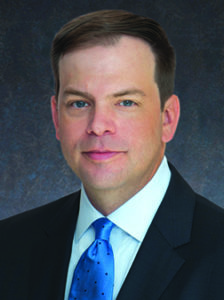
by brian hendrix
The Mine Safety and Health Administration (MSHA) has a new “Enhanced Enforcement Program.” If this is news to you, you’re in good company. MSHA hasn’t done much to publicize it. Word of the program has been circulating informally since early April, along with a written description dated February 28. Then, at an industry conference
on May 9, an MSHA official confirmed the existence of the program, said that it started on April 14 and indicated that MSHA would post information about it on MSHA’s website. Now, if you search MSHA’s website for it, you’ll find the page describing the program.
MSHA’s program is, ostensibly, aimed at reducing accidents involving customer and contract truck drivers; and managers and supervisors performing mining tasks. MSHA claims that its “analysis of recent accident data” indicates that those two categories “represent a significant number of recent fatalities.” MSHA’s solution is to direct its inspectors to focus on certain standards and assess higher penalties for violations of those standards.
It’s certainly “something.” That was my initial reaction to it, although I don’t mean that it’s remarkable or impressive. As you’ll see, I doubt it’ll have the intended effect (or much effect at all). Rather, I mean it’s an example of the “something” that’s described by the politician’s fallacy. You may not know it by that label, but you’re probably familiar with it. It goes like this: We must do something. This is something. Therefore, we must do this.
MSHA said the program will become a part of regular inspections (two per year for surface mines and four per year for underground). Any citations issued for violations related to customer and contract truck drivers, and managers and supervisors who perform mining tasks may be considered for a special assessment.
When it comes to task training with customer and contract truck drivers, mine operators must assure that miners have the skills necessary to perform tasks in a safe manner. This is particularly true for customer or contract truck drivers. Truck drivers must be trained in the tasks necessary to perform their jobs at the mine. MSHA inspectors will focus control of equipment, use of seat belts pre-operation inspection and brake maintenance.
Mine operators must provide appropriate hazard training to customer and contract truck drivers.Managers and supervisors who perform mining tasks must also be tasked trained.
Higher penalties — special assessments — for certain violations and a “focus” on task training. That’s it. That’s the entire program.
MSHA’s Enhanced Enforcement Program isn’t innovative. It reminds me of MSHA’s Rules to Live By initiative, although this program is simple and simplistic by comparison. Most importantly though, it’s not likely to move the needle on compliance. Let’s use seat belts as an example. Ideally, contract truck drivers would always use seat belts. Most do. Compliance by the general public with seat belt laws is the norm, not the exception. Roughly 90% of the time here in the United States, people buckle up.
Why do one in 10 contract truck drivers fail to buckle up? I’ve heard all sorts of excuses. “I forgot.” “It’s uncomfortable.” “It’s dirty.” “It’s broken.” “I didn’t know I had to.” MSHA doesn’t and shouldn’t accept any of those excuses. Good mine operators don’t accept those excuses.
MSHA suggests that training might be to blame, but I’m skeptical. If you’re a sentient adult who is licensed to drive and capable of operating a haul truck, you must know that seat belts save lives and are required by law (by state law on public highways and MSHA regulation on mine property).
So, how does MSHA’s Enhanced Enforcement Plan reach that one haul truck driver out of 10 who doesn’t buckle up? You already know the answer: higher penalties. MSHA thinks that increasing the penalties assessed to production operators and/or to the independent contractors that employ the drivers will increase the compliance rate.
Again, I’m skeptical. I seriously doubt it’ll increase compliance rates or improve safety or health. MSHA’s Enhanced Enforcement Program doesn’t strike me as a sound, wise or effective policy, but it is definitely “something.”
Brian Hendrix is a partner at Husch Blackwell. He can be reached at brian.hendrix@huschblackwell.com.


